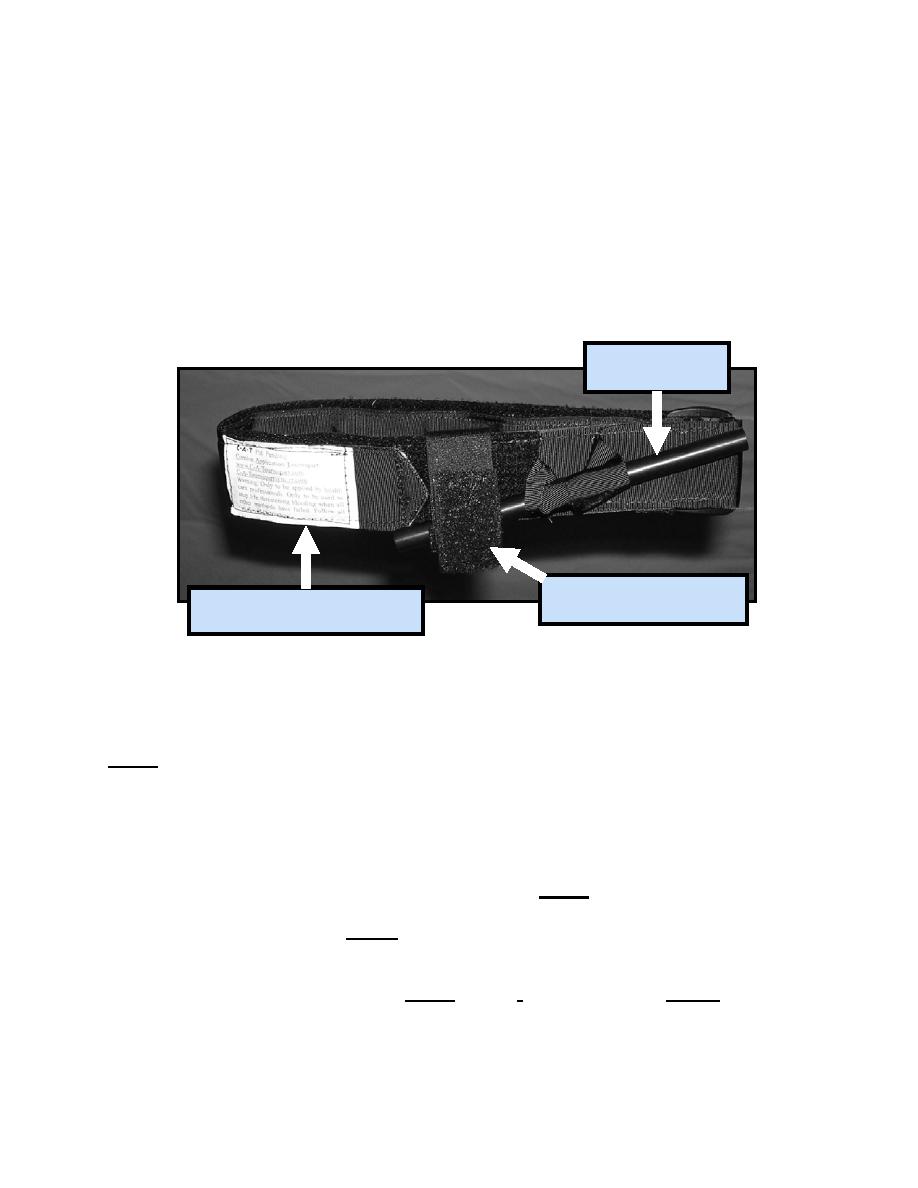
(2) A person whose arm or leg has been amputated may not be bleeding
when first discovered, but a tourniquet should be applied anyway. This absence of
bleeding is due to the body's normal defenses (contraction and clotting of blood
vessels) as a result of the amputation. However, bleeding will start when the blood
vessels relax or if the clot is knocked loose while moving the casualty.
APPLYING A COMBAT APPLICATION TOURNIQUET
5-9.
A Combat Application Tourniquet (CAT) (figure 5-15) is the tourniquet of choice. It is
effective and can be applied quickly. Use the CAT from the soldier's individual first aid
kit. Procedures for applying the CAT are given below.
Windlass
Windlass Strap
Self-Adhering Band
Figure 5-15. The Combat Application Tourniquet.
a. Remove the CAT from its pouch.
NOTE:
The CAT is packaged in its one-handed configuration.
b. Slide the wounded extremity through the loop of the Self-Adhering Band
(figure 5-16 A).
c. Position the CAT (figure 5-16 B) two inches above the wound.
CAUTION:
If the wound is below the knee or elbow, initially position the tourniquet
band two inches above the wound. If a tourniquet applied below the
knee or elbow is not successful at stopping the bleeding, apply a second
tourniquet two inches above the joint (knee or elbow). Do not remove
the first tourniquet until the second tourniquet has been applied.
IS0871
5-14



 Previous Page
Previous Page
